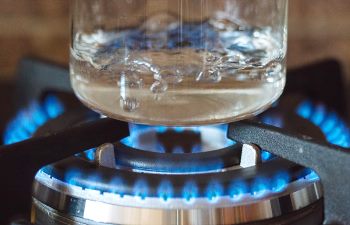property>boiling point at 1 atm
What is the Boiling Point at 1 atm?

The boiling point of a liquid is the temperature at which it changes its state from liquid to gas. In other words, at the boiling point the vapour pressure of a liquid becomes equal to the pressure of its environment. The boiling point at one atmosphere or atmospheric boiling point is the temperature at which the vapour pressure becomes equal atmospheric pressure at sea level. When the boiling point is reached the temperature of the liquid can no longer rise. At the boiling point, all the heat supplied to the liquid is used to change its state into vapour form. This amount of energy is known as the latent heat of vaporization.
The atmospheric pressure at sea level is equal to 101,325 Pa (pascal). This pressure decreases with increasing elevation and hence the boiling point of a liquid also decreases. To understand it more clearly, recall that the boiling point of water is 100 оC at 1 atm. This means that the vapor pressure of water is 1 atm or 760 mmHg at 100 оC. We know that the boiling point of water decreases with lower pressure, for instance, when we are in a mountain resort. At places like these, water boils more quickly than in higher pressure areas close to sea level, but a lower temperature. It is well known to mountaineers that it is almost impossible to make a satisfactory cup of tea at high altitudes.
The boiling point of a liquid at 1 atm is also known as the normal boiling point. It has been found that Helium has the lowest normal boiling point (−268.9 °C) because it has very weak intermolecular attractions. Liquids that have high vapour pressures and low boiling points are known to be volatile, which means they evaporate quickly at room temperature. When the temperature increases, molecules start entering the gaseous state, consequently increasing the vapor pressure of the liquid until it comes into equilibrium with the atmospheric pressure. The boiling point is largely determined by the intermolecular forces between molecules; if these forces are strong, the boiling point will be high.
Adding salt to water (or any other non-volatile solid for that matter) raises its boiling point. Another way to raise the boiling point is to increase the pressure such that it is greater than 1 atm. This is what happens when we cook food in a pressure cooker. As the pressure increases, the boiling point also increases and hence food cooks faster than it normally would. This way we are supplying more heat to water because its boiling point has increased above 100 °C.
Another term for boiling point is the saturation temperature, which is the temperature at which a liquid holds as much thermal energy as it can without becoming vapour.